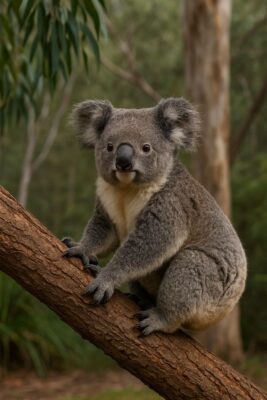 Marsupials are a fascinating group of mammals that are best known for one very unique trait their pouches. But there’s much more to them than just that. Found primarily in Australia and nearby regions, marsupials offer a special window into evolutionary biology.
Marsupials are a fascinating group of mammals that are best known for one very unique trait their pouches. But there’s much more to them than just that. Found primarily in Australia and nearby regions, marsupials offer a special window into evolutionary biology.
At Vero Q&A, we explore the extraordinary. So, what really sets marsupials apart from other mammals?
Defining Features of Marsupials
Marsupials belong to a specific infraclass of mammals called Metatheria. Unlike placental mammals (Eutheria), marsupials have a shorter gestation period and rely on external development.
1. Pouched Offspring
Perhaps the most well-known trait is the pouch a protective skin fold where the young complete their development. This pouch, or marsupium, is not just for kangaroos. It’s also found in koalas, wallabies, possums, and wombats.
2. Short Internal Gestation
Marsupial babies (called joeys) are born after a very brief pregnancy—often less than two weeks. They are incredibly underdeveloped and continue to grow inside the pouch, clinging to a nipple for nourishment.
3. Different Reproductive System
Marsupials have unique reproductive anatomy:
- Females have two uteri and two vaginas.
- Males often have a bifurcated (forked) penis, corresponding to the dual female anatomy.
Where Are Marsupials Found?
Most marsupials are found in:
- Australia and surrounding islands (about 70% of all species)
- South America
- A few species, like the Virginia opossum, live in North America
Their presence in isolated regions is a result of ancient continental drift and adaptive evolution.
Types of Marsupials
| Marsupial | Location | Interesting Trait |
|---|---|---|
| Kangaroo | Australia | Strong hind legs and tail for hopping |
| Koala | Australia | Eats only eucalyptus leaves |
| Wombat | Australia | Digs elaborate burrows |
| Opossum | North America | Only marsupial in the U.S. |
| Sugar Glider | Australia, Indonesia | Glides through the air using a skin membrane |
How Do Marsupials Compare to Placental Mammals?
| Feature | Marsupials | Placental Mammals |
|---|---|---|
| Gestation | Short (8–43 days) | Long (weeks to months) |
| Development | External (in pouch) | Internal (in uterus) |
| Birth size | Extremely small and undeveloped | Larger and more developed |
| Placenta | Simple, short-term | Complex, long-term |
| Examples | Kangaroos, Koalas, Possums | Dogs, Humans, Elephants, etc. |
Why Do Marsupials Matter?
Marsupials provide insight into evolution, adaptation, and biodiversity. Their survival strategies especially in harsh environments are nothing short of ingenious. Many species are threatened, making conservation vital.
At Vero Q&A, we believe curiosity fuels understanding. Marsupials show us that mammals can come in vastly different forms yet thrive through creative biology.
Do all marsupials have pouches?
Most do, but not all. Some have rudimentary pouches or skin folds, and in some species, only females have them. While most are in Australia, you’ll find species in South America and even one (the Virginia opossum) in North America. Many marsupials can have multiple litters annually due to their short gestation. They control pests, disperse seeds, and play key roles in food webs. It varies by species, koalas stay around 6 months, while kangaroos may stay 8-9 months marsupial joeys stay in the pouch.
Are marsupials endangered?
Many species are. Habitat loss, climate change, and invasive predators threaten their survival.
Whether it’s the iconic kangaroo leaping across the outback or a tiny sugar glider soaring through the trees, marsupials remind us how wonderfully diverse life on Earth can be. And with Vero Q&A, you’re never more than a click away from understanding the wonders of the natural world.